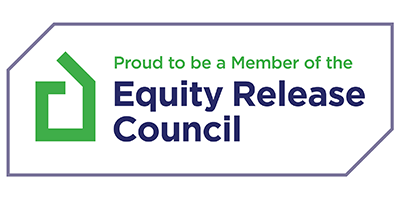In this article
Many homeowners reach a stage where they want to access the wealth tied up in their property.
Whether it’s to fund home improvements, clear debts, help family members, or supplement retirement income, releasing equity can provide financial flexibility.
While remortgage to release equity is a common way to do this, it’s not the only option.
For those who don’t want to change their mortgage, or who are over 50 and exploring tailored solutions, alternative routes are available.
Understanding these options can help you make the right choice for your circumstances.
Can you Release Equity Without Remortgaging?
Explained in 1 min 28 seconds
Find more videos like this on MoneymanTV
Why Do Homeowners Look to Release Equity?
Over time, property values tend to rise, meaning many homeowners find themselves with significant equity in their home.
Rather than letting it sit unused, accessing this equity can be a practical way to improve financial stability.
Common reasons for releasing equity include:
- Covering large expenses, such as renovations or medical costs
- Providing financial support for children or grandchildren
- Paying off outstanding debts
- Boosting income in later years without having to downsize
Alternatives to Remortgaging
If you’re not keen on switching your mortgage, there are alternative ways to access your property wealth.
Secured Loans (Second Charge Mortgages)
A secured loan, sometimes called a second charge mortgage, allows homeowners to release equity by borrowing against their home while keeping their existing mortgage in place.
This can be useful if:
- You don’t want to remortgage due to early repayment charges or a favourable interest rate.
- You need to access a lump sum but want to avoid changing your main mortgage deal.
- Your current lender won’t allow additional borrowing, but another provider will offer a loan secured against your property.
The loan amount depends on the available equity in your home, and monthly repayments will be required.
While this can be an effective way to release funds, it’s important to ensure the repayments remain affordable alongside any existing mortgage commitments.
Further Advance: Borrowing More from Your Existing Lender
A further advance is an additional loan taken from your current mortgage lender, allowing you to release equity without switching providers. This can be a good option if:
- Your lender offers competitive rates for further borrowing.
- You want to avoid the fees associated with remortgaging or taking out a separate secured loan.
- You meet your lender’s affordability checks and criteria for additional borrowing.
Because a further advance is an extension of your existing mortgage, the additional borrowing will typically be repaid over the remaining term of your mortgage.
It’s important to check whether the new loan has a different interest rate from your main mortgage and how this might impact repayments.
Speak to an Advisor – It’s Free!
Schedule a free callback from one of our experts today.
- All situations considered
- Transparent and honest mortgage advice
- We search 1000s of purchase and remortgage deals
Our customers rate us 4.9/5
Lifetime Mortgages (Over 55s)
A lifetime mortgage allows homeowners over 55 to borrow against their property without making monthly repayments.
The loan is repaid when the property is sold, usually when the homeowner passes away or moves into long-term care.
- Some lifetime mortgages allow voluntary repayments to reduce the overall cost, while others roll up interest over time.
- Drawdown options let homeowners access smaller amounts of equity as needed rather than taking a large lump sum.
- Protected equity features can ensure a portion of the home’s value is preserved for inheritance purposes.
This option enables homeowners to release equity while continuing to live in their property. Since interest compounds over time, the amount owed can grow significantly.
Speaking to an expert can help in understanding the long-term impact of this type of borrowing.
Home Reversion (Over 55s)
Home reversion is another option for homeowners over 55, though it works differently from a lifetime mortgage.
Instead of borrowing against the property, a portion of it is sold to a provider in exchange for a lump sum or regular payments.
- The homeowner can continue living in the property rent-free for the rest of their life.
- The share of the home sold is owned by the provider, meaning any increase in property value benefits them rather than the homeowner.
- The lump sum received is often lower than the market value of the share sold, as the provider will only receive their return when the property is eventually sold.
This option might appeal to those who want to release a portion of their property wealth without taking on a loan, though it’s important to consider how much ownership is retained and how this might impact future financial plans.
A home reversion plan is certainly not for everyone and speaking with an experienced mortgage advisor like the team we have here at UK Moneyman, can help determine if this is the right option for you.
Bridging Loans: A Way to Secure Quick Funding
For homeowners who need access to funds quickly, a bridging loan offers short-term borrowing secured against a property.
It can provide temporary funding for those in specific situations, such as:
- Buying a new home before selling an existing one.
- Renovating a property before securing long-term finance.
- Settling urgent financial matters where a standard mortgage or loan would take too long to arrange.
Bridging loans are typically repaid within 12 months and have higher interest rates than standard mortgages.
They can be a useful tool for homeowners with a clear repayment strategy, such as selling a property or refinancing onto a longer-term mortgage.
Is Remortgaging Still Worth Considering?
While alternatives exist, remortgaging remains one of the most effective ways to release equity.
If your current mortgage deal is coming to an end or you can secure a better interest rate, switching to a new mortgage with additional borrowing might be a cost-effective option.
For those over 50, lenders have become more flexible with age limits, meaning remortgaging could still be an option even if you’re approaching or past retirement age.
Affordability checks will apply, but if you have a reliable income or pension, securing a new mortgage deal might work in your favour.
The right choice depends on your personal circumstances. Speaking to a mortgage broker can help you explore the most suitable route for releasing equity while protecting your long-term financial wellbeing.







